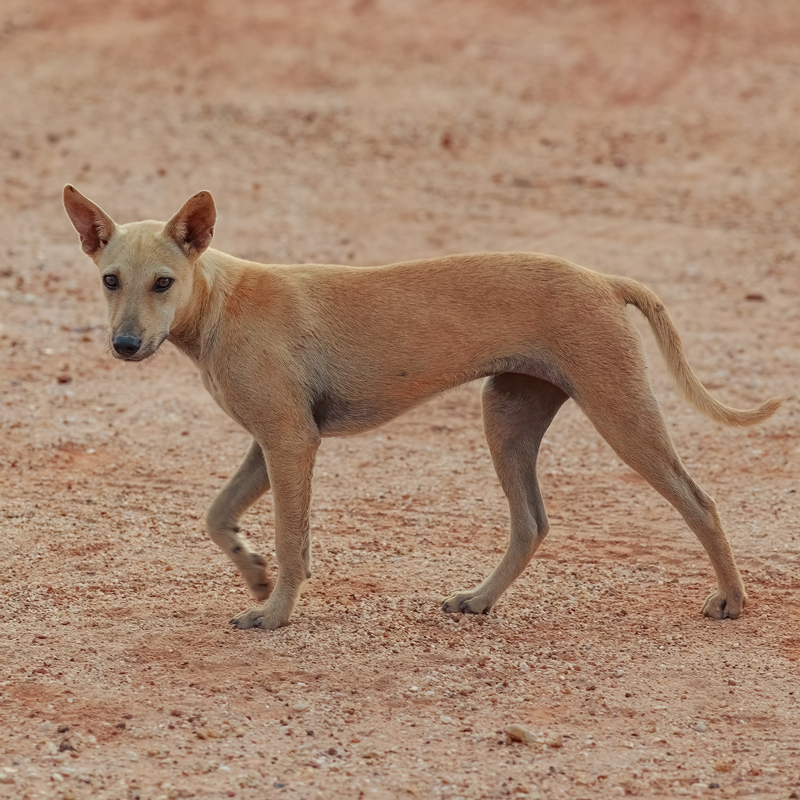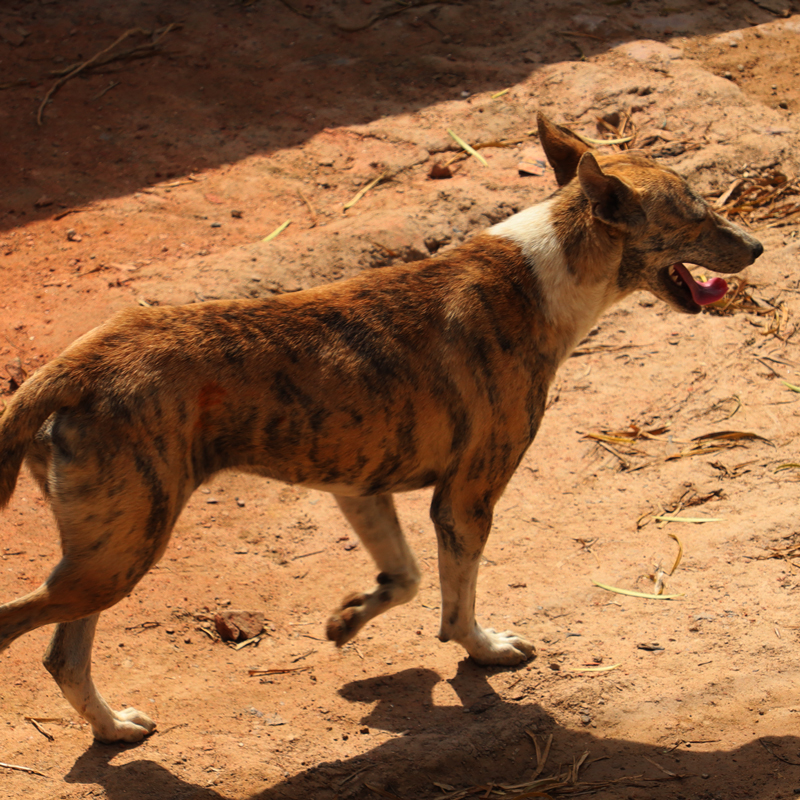
Namibian Street Dog
Namibian street dogs are free-roaming pups that typically congregate in cities or towns with plentiful resources. They share many basic traits with pet dogs, but they lead primarily independent lives outdoors.
Interested in discovering if your dog is a Namibian Street Dog?
Check out Wisdom Panel's DNA tests.

Namibian Street Dog Traits
General Appearance
Namibian street dogs can come in all shapes and sizes. However, street dogs generally tend to be medium-sized.
Coat and Colouring
Though any combination of coat colors, patterns, and lengths is genetically possible, street dogs typically have short, brownish coats.
Distinctive Physical Traits
Namibian street dogs do not follow a breed standard—no shared set of traits links them together. That said, common characteristics of street dogs include prick ears and pointed noses.
Namibian Street Dog Temperament
Street dogs must learn to fend for themselves. As a result, they tend to be scrappy, intelligent, and adaptable—all skills that support independent survival. Because they've never had to rely on humans, they may be fearful or skeptical of people who have not earned their trust.

Namibian Street Dog History
Like all dogs, the Namibian street dog is a descendant of the gray wolf. Thousands of years ago, a number of wolves became domesticated. And over time, it became clear that these domesticated canines could perform many useful jobs—from pulling sleds to herding sheep to protecting livestock.
As a result, people began selectively breeding them to strengthen the traits that made them excel in specific areas or conditions. This effort resulted in the many purebred dogs that we know and love today. But the majority of dogs around the world do not belong to a particular breed. This includes Namibian street dogs.
Today, many semi-feral and stray dogs in Namibia have either been born in the wild or abandoned by pet owners. Limited access to veterinary care and spay and neuter programs has resulted in a growing number of dogs in the streets. But local non-profit organizations are working to treat sick or injured dogs, sterilize them to reduce overpopulation, and find them homes.
Namibian Street Dog Care
Nutrition
A Namibian street dog's diet typically consists of whatever they can kill or find—small farm animals, scraps from trash cans, handouts from kind strangers, and so on. If you're leaving food out for a street dog, they'll benefit from commercial diets formulated for pet dogs.
Because they fend for themselves, street dogs aren't usually at risk of becoming overweight. However, if you take a street dog under your roof, keep an eye on their food intake to avoid overfeeding. Guidelines on dog food packages are a good starting point when determining daily portions.
Grooming
If you've adopted a street dog that's comfortable being handled, regular brushing and nail trims will help them look their best. Good dental hygiene is also important for any dog. Professional cleanings and at-home dental care will keep their mouths healthy and reduce the risk of related health issues.
Exercise
All dogs need exercise to stay physically and mentally fit, and street dogs are no exception. Nambian street dogs that are on their own will get adequate exercise during their daily roaming. Pet dogs, however, need access to the outdoors to stretch their legs and get mental stimulation. Playing in a fenced yard and going for leashed walks are great ways for your dog to release energy.
Training
Street dogs are not accustomed to obeying commands from people. In fact, many may avoid close contact with humans. Before attempting a training program, start by building trust and respect with your dog. Slow and steady is the best approach to making inroads with a street dog.
Breed Group
Middle Eastern and African
While this ancient group shares many of the characteristics of the Hound Group, their origins, as the name would suggest, are concentrated in Africa and the Middle East unlike the hound group that has no true geographic center.




















